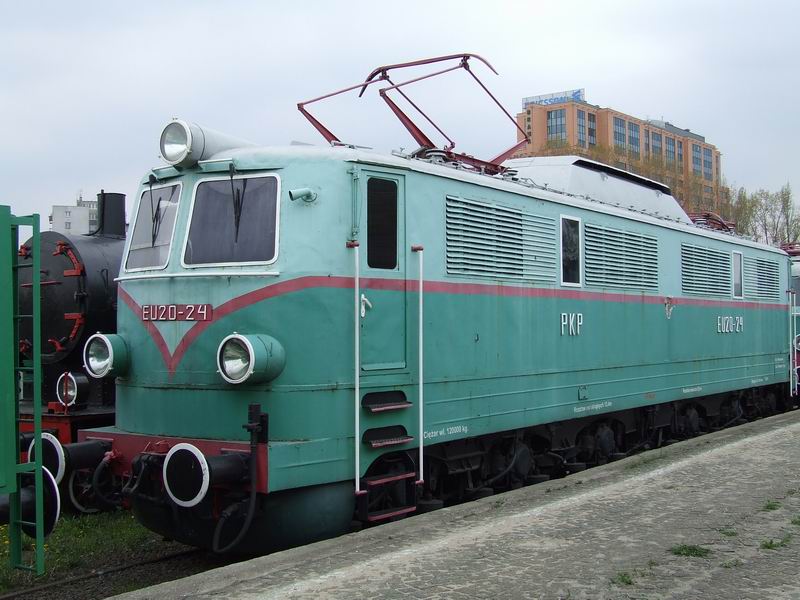- PKP class EU20
Infobox Locomotive Auto
name = EU20
powertype = Electric

imagesize = 300px
caption = EU20-24 at the Warsaw Railway Museum, 2006.
caption2 =
designer =
builder = Lokomotivbau Elektrotechnische Werke (LEW) flagicon|DDR
serialnumber =
buildmodel =
builddate =1955 -1958
totalproduction = 34
uicclass = Co'Co'
gauge = RailGauge|sg
trucks =
length = convert|18.5|m|abbr=on
height =
width = convert|3.05|m|abbr=on
wheeldiameter = convert|1.35|m|abbr=on
weight = 120 t
electricsystem =
collectionmethod = pantograph
alternator =
generator =
tractionmotors = 6
transmission = 81:21
topspeed = convert|110|km/h|abbr=on
poweroutput = 2,520 kW
tractiveeffort =
factorofadhesion =
locobrakes = Knorr
trainbrakes =
safety =
railroad =PKP
officialname =
nicknames =
locale = flagicon|POLPoland The EU20 is an
East German standard gauge electric locomotive specially built for, and used by, the Polish national rail operator,PKP .History
In production for a mere three years (
1955 -1958 ), the series was built at the "Lokomotivbau Elektrotechnische Werke" works — commonly shortened to "LEW" — inHennigsdorf , East Germany. During this time, 34 units were produced with the intention for use as amixed traffic locomotive – hence its EU designation – though the reality is that the EU20 saw more use as a freight locomotive than a passenger one. EU20s were the first electric locomotives to be used on the route betweenWarsaw andSilesia .The class gained notoriety for its frequent breakdowns involving the overheating of
resistors , due to the lack of additional cooling facilities found in other locomotives.Technical Data
Mechanically, the EU20 was identical to the earlier EU04 (also built by LEW), sharing the same traction engines, rectifiers, and gas compressors.
Operational History
During the series' 26 year service, most units were assigned to the
Piotrków Trybunalski depot. EU20s were withdrawn over a 6 year period, beginning in1976 , with the last locomotive being withdrawn in1981 .Current Status
EU20-24 has been preserved as an exhibit at the
Warsaw Railway Museum , and is the only surviving example from the series.
Wikimedia Foundation. 2010.
